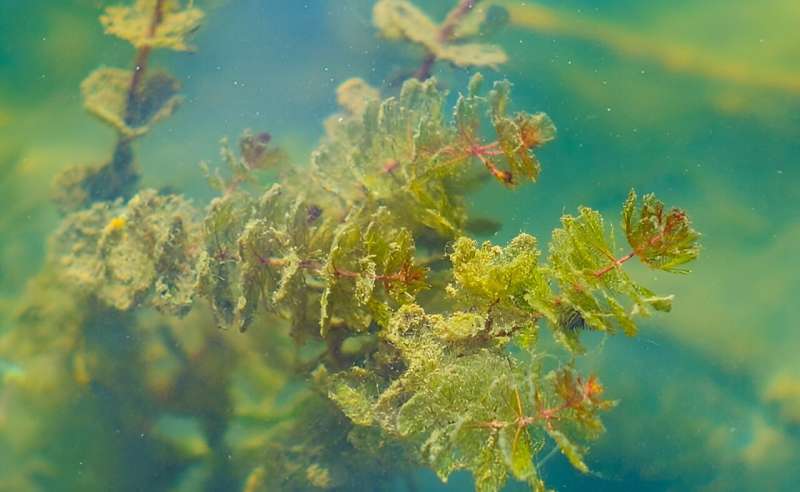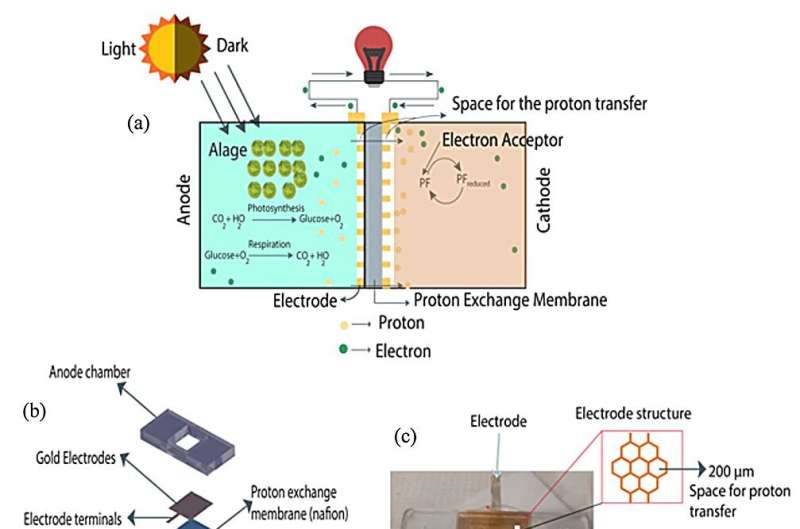This article has been reviewed according to Science X's editorial process and policies. Editors have highlighted the following attributes while ensuring the content's credibility:
fact-checked
peer-reviewed publication
trusted source
proofread
Algae offer real potential as a renewable electricity source, research shows

The need to transition away from fossil fuels to more sustainable energy production is critical. That's why a team of Concordia researchers is looking at a potential power source that not only produces no carbon emissions but removes carbon as it works: algae.
Researchers at the Optical-Bio Microsystems Lab recently published a new paper on this topic in the journal Energies. In it, they describe their method of extracting energy from the photosynthesis process of algae suspended in a specialized solution and housed in small power cells. Configured correctly, these cells can generate enough energy to power low- and ultra-low power devices such as Internet of Things (IoT) sensors.
"The idea of the micro photosynthetic power cell is to extract electrons produced through the process of photosynthesis," says Kirankumar Kuruvinashetti, Ph.D., now a Mitacs postdoctoral associate at the University of Calgary.
"Photosynthesis produces oxygen and electrons. Our model traps the electrons, which allows us to generate electricity. So more than being a zero-emission technology, it's a negative carbon emission technology: it absorbs carbon dioxide from the atmosphere and gives you a current. Its only byproduct is water."
Power generated day and night
The micro photosynthetic power cell consists of an anode and a cathode chamber separated by a honeycomb-shaped proton exchange membrane. The researchers fabricated microelectrodes on both sides of the membrane to collect the charges released by the algae during photosynthesis. Each chamber measures only two centimeters by two centimeters by four millimeters.
The algae are suspended in a two-milliliter solution in the anode chamber while the cathode is filled with potassium ferricyanide, a type of electron acceptor. Once the algae undergo photosynthesis and begin to release electrons, the electrons will be collected through the membrane's electrodes and conducted, creating a current.

The protons, meanwhile, will pass through the membrane into the cathode and cause oxidation, resulting in a potassium ferrocyanide reduction.
The process also works without direct sunlight, though at a lower intensity, explains Ph.D. candidate and paper co-author Dhilippan Panneerselvam.
Panneerselvam says, "Just like humans, algae are constantly breathing—but they intake carbon dioxide and release oxygen. Due to their photosynthesis machinery, they also release electrons during respiration. The electricity generation is not stopped. The electrons are continuously harvested."
Muthukumaran Packirisamy, professor in the Department of Mechanical, Industrial and Aerospace Engineering and the paper's corresponding author, admits the system is not yet able to compete in power generation with others like photovoltaic cells. The maximum possible terminal voltage of a single micro photosynthetic power cell is only 1.0V.
But he believes that, with enough research and development, including artificial intelligence–assisted integration technologies, this technology has the potential to be a viable, affordable and clean power source in the future.
It also offers significant manufacturing advantages over other systems, he says.
Packirisamy adds, "Our system does not use any of the hazardous gases or microfibers needed for the silicon fabrication technology that photovoltaic cells rely on. Furthermore, disposing of silicon computer chips is not easy. We use biocompatible polymers, so the whole system is easily decomposable and very cheap to manufacture."
More information: Kirankumar Kuruvinashetti et al, Micro Photosynthetic Power Cell Array for Energy Harvesting: Bio-Inspired Modeling, Testing and Verification, Energies (2024). DOI: 10.3390/en17071749

















